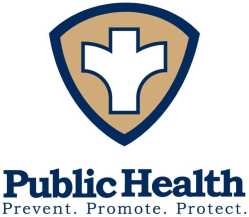Recording Life’s Journey: Birth and death certificates

Birth certificates and death certificates are two of the most important pieces of documentation for maneuvering through life. We are reminded of their importance often times when they are misplaced or lost.
It is important to provide correct information when a record is being developed, there can be many problems later on when vital records do not have accurate data provided at the time of either the birth or death. It can be quite frustrating for a family when corrections need to be made years after the event when the record was originally developed and certified. Records cannot be changed without a paternity affidavit, a court order or approved evidence to back up the needed correction.
When we start our life, we are issued a birth certificate that shows our name, date of birth, parents’ names, date filed with the local health department and the health officer’s signature. It is affirmed and accepted by the registrar at the health department. When it is issued, the health officer’s embossed seal is in the lower left corner.
You can take this document and have a social security card issued or sign up for kindergarten. It is also needed to get a driver’s license among many other uses. One of the most common misconceptions, is the certificate that your parents are given when you were born is your “official birth certificate.” This is incorrect — that certificate is a sentimental copy that has your information along with your footprints to be kept as a memento. The certificate will often state, in very small print at the bottom, “not an official copy.” The record that most institutions are requesting is the certified copy of your birth certificate.
Death certificates hold a very different function than someone’s birth record. That being, the birth certificate is documentation of the start of someone’s life and is open; open for all the events in that person’s lifetime to accumulate. The death certificate is one of the last officially recorded documents that respectfully closes a person’s lifespan. The death certificate will provide much more detailed information than the birth record. The person has had a lifetime to add events to their record.
As simple as the birth record is with only your name, date of birth, and your parents’ names, the death records hold much more. There are three sections to a death record.
The first is the demographics of the decedent. Some of the things listed in the first section is your name at time of death, the date of death, if you were in the U.S Armed Forces, where you passed, what your marital status was, if married, your spouse’s name, your date of birth and your parents’ names.
The next section is information about the funeral home or crematory that had the care of body. It provides the name of a funeral facility along with the signature of the funeral home director. Both are required by law to be licensed in the State of Indiana.
The last section is the one that sometimes can hold the most profound and emotional information for the family left behind. This section holds the cause of death, along with the contributing conditions or underlying causes. As necessary in some cases, it will include the injury information of the event – details about the automobile accident, overdose suicide, or even homicide. Many times, that is very hard for loved ones to see in black and white and makes it even more evident that their loved one is gone. The cause of death is certified by a physician, coroner, or health officer. It is affirmed and accepted at the health department by the registrar.
When the record is issued, just like the birth certificate, there is an embossed health officer’s seal placed in the lower left corner.
Currently, in Indiana you can get a certified copy of a vital record at only two locations. One of the easiest places is the local health department in the county where the birth or death occurred. The other is at the state level through the vital records department at the Indiana Department of Health. The latter option often takes several weeks and must be done either electronically or by mail.
If you choose to come into the local health department, in the county where the event occurred, it’s quite easy. It typically takes about 5-10 minutes, and you walk out with the certificate the same day. You can also order by mail, it is processed the same day at our office and mailed out to you.
The Putnam County Health Department can provide certified birth and death records for only individuals who were born or died in Putnam County. Our records are from 1882 through present. Many families are interested in a family tree search, and we also offer genealogy searches and uncertified copies of birth and death records.
We’re putting your Health First, Putnam County. This article is the first in a new series of public health education efforts being made by the Putnam County Health Department. We hope you find this information helpful.
Our office is located at 1542 S. Bloomington St., Suite 1500, Greencastle, (located inside the hospital in the medical office building, first door on the right). Regular office hours are Monday through Friday 8 a.m.-4 p.m., closed from noon-1 p.m. for lunch. Visit the website at www.IN.gov/localhealth/putnamcounty or our Facebook page at facebook.com/PCHDIndiana, you can also contact the office at 653-0203.
